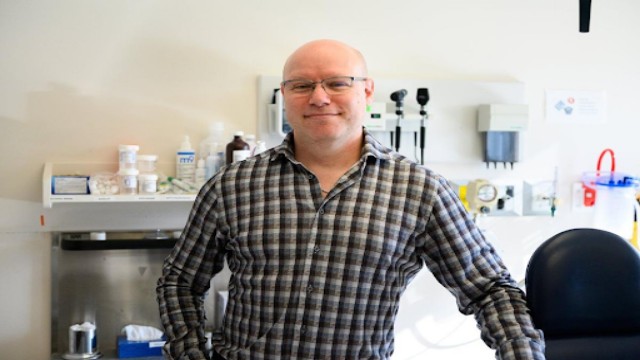
Condoms and other sexual wellness items are made available to the students of the University of Mississippi campus in Oxford, Miss., Wednesday, Aug 28, 2024. (AP Photo)
Changing Attitudes Toward Condom Use Among Young Adults
At the entrance of a gym at the University of Mississippi, a bowl brimming with condoms sits unattended. As students exit after their workouts, some giggle and point at the bowl, while others hesitate to take a condom, influenced by the laughter of their friends. Although officials claim to refill the bowl several times daily and condoms are available at various campus locations, students suggest this lack of interest reflects a broader shift in attitudes.
Research indicates that fewer young people are engaging in sexual activity, but those who do are using condoms less frequently. In 2022, individuals aged 15 to 24 accounted for half of all new cases of chlamydia, gonorrhea, and syphilis. Experts attribute this decline in condom use to several factors, including advancements in long-term birth control methods, the availability of medications to prevent sexually transmitted infections (STIs), and a waning fear of HIV. Furthermore, the quality of sex education varies significantly in high schools, leaving many young adults uninformed.
Dr. Joseph Cherabie, a medical director at the St. Louis HIV Prevention Training Center, points out that past condom advertisements often relied on fear tactics. Today's focus is shifting toward promoting safe and informed choices.
In downtown Oxford, the atmosphere is lively as college students gather for the first football game of the season. Amid the excitement, Magan Perry, president of the college’s Public Health Student Association, notes that many students forgo condom use. She explains that young women often feel compelled to bring up the topic of condoms, and when they do, they may face resistance.
“I’ve heard men say they’ll just buy emergency contraception instead,” Perry reveals. Such attitudes can lead to uncomfortable situations, where women feel pressured or shamed into compromising their sexual health.
Dating apps and casual encounters can also blur the lines of healthy relationships. Annie Loomis, a University of Washington student, remarks on the importance of clear communication regarding condom use. “If you say, ‘I want you to wear a condom,’ and they refuse, then sex shouldn’t happen,” she asserts.
For heterosexual couples, the primary reason for condom use has traditionally been pregnancy prevention. Meanwhile, fear of HIV has historically motivated condom use among men who have sex with men. However, as concerns about HIV diminish, so does the use of condoms. Research shows this change in mindset extends to younger generations.
Some health professionals worry that the growing acceptance of pre-exposure prophylaxis (PrEP), which prevents HIV, is overshadowing the importance of condoms. Despite a significant focus on PrEP, the Centers for Disease Control and Prevention (CDC) maintains that condoms remain a crucial tool for preventing STIs.
The advent of new medical options also plays a role in declining condom use. With long-acting birth control methods gaining popularity among young women, many opt for these alternatives instead of condoms. Ole Miss junior Madeline Webb and her partner, however, continue to use condoms regularly, understanding their importance even in a long-term relationship.
Doxycycline post-exposure prophylaxis (doxy PEP) is another emerging option that can help prevent STIs after unprotected sex. While it shows promise, especially among men who have sex with men, it requires a prescription, which can limit access.
In Mississippi, where comprehensive sex education is often lacking, the absence of condom demonstrations in schools contributes to a culture of silence surrounding sexual health. Advocates argue that abstinence-only programs fail to adequately prepare young people for real-life situations.
As the conversation around sexual education evolves, comparisons with states like Oregon illustrate significant disparities. Oregon mandates comprehensive sex education, providing students with the knowledge and skills to make informed choices about their sexual health.
In conclusion, experts emphasize the need for better education and resources to empower young people in their sexual health decisions. “We wouldn’t send soldiers into battle unprepared,” argues Michelle Slaybaugh, advocating for a similar approach to educating youth about their sexual health.















